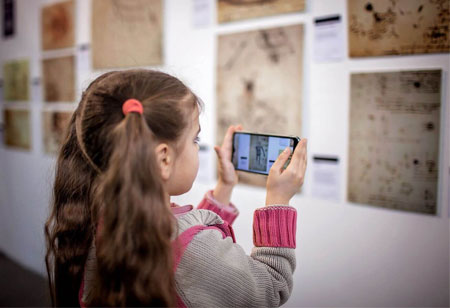THANK YOU FOR SUBSCRIBING
Using Augmented Reality for Distance Learning
Lessons come to life with AR, and learning becomes more complex. Lectures are enhanced by multidimensional images and riveting animations, which hold students' attention.

By
Apac CIOOutlook | Tuesday, March 09, 2021
Stay ahead of the industry with exclusive feature stories on the top companies, expert insights and the latest news delivered straight to your inbox. Subscribe today.
Lessons come to life with AR, and learning becomes more complex. Lectures are enhanced by multidimensional images and riveting animations, which hold students' attention. These inventive presentations pique children's interest and encourage them to participate more actively in lessons.
Fremont, CA: The use of augmented reality (AR) and virtual reality (VR) in the classroom has risen steadily over the last decade. It aids educators in the development of a fully immersive learning environment. Learners are more deeply engaged as a result, and ideas are better understood. As distance learning becomes more common, these technologies may become more common.
Many augmented reality experiences don't need any extra hardware beyond a smartphone or tablet. When used correctly, augmented reality can be a powerful tool for improving the effectiveness of distance learning.
How to improve distance learning through augmented reality:
Both learners and educators face many obstacles when it comes to distance learning. Students have few opportunities for hands-on learning. Educators face many challenges when it comes to presenting lessons and communicating with students. Both of these problems can be solved with augmented reality. The following are some examples of how virtual reality can be used for distance learning:
• AR Makes Lessons More Effective
Lessons come to life with AR, and learning becomes more complex. Lectures are enhanced by multidimensional images and riveting animations, which hold students' attention. These inventive presentations pique children's interest and encourage them to participate more actively in lessons.
• Augmented Reality Helps to Make Abstract Concepts More Concrete
With AR applications, students gain a better understanding of abstract concepts. Video simulations make chemical reactions and biological processes more understandable. For better learning, 3D renderings of the earth's layers or human DNA have more tangible representations.
• Augmented Reality Makes Simulations Possible
When concepts are applied in real-life situations, learning becomes more powerful. This is made possible by using AR to simulate processes or procedures. Even if they don't have access to a microscope or other laboratory instruments, students will learn about cell structures in biology.
• Augmented Reality Allows for Virtual Field Trips
Field trips and educational tours are possible even with distance learning. Museum visits, volcanic eruption investigations, and planet explorations are all available to children. AR also provides multisensory interactions that help students learn more effectively.





